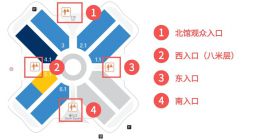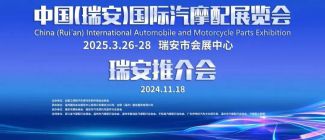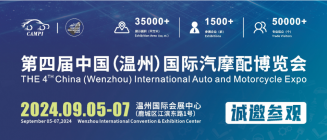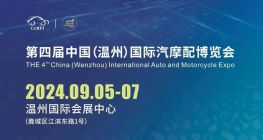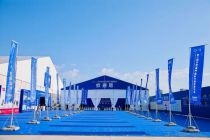Scan QRCode

Technological changes, product updates, and industrial replacements In the first half of the year, the automobile industry pressed the fast forward button, and automobile consumption continued to soar under the dual stimulation of national and local subsidies. However, the industry and enterprises experienced unprecedented deep adjustments in the price war, and collisions and reflections followed.
The following is an inventory of major events in the automotive industry in the first half of 2025. This article will review the market structure, industry pain points, industry integration and enterprise competition patterns, technological trends, and other aspects to take a look at the changes in this half year.
01
Record breaking penetration rate of new energy vehicles
Self owned brands continue to lead the way
According to data from the China Association of Automobile Manufacturers, the penetration rate of the new energy retail market reached 52.9% in May, an increase of 6.2 percentage points from the same period last year, setting a new historical high; Among them, the penetration rate of independent brand new energy is as high as 74.6%, far exceeding the 6.4% of joint venture brands, and the overall market share of independent brands has risen to 65.2%. In this round of explosive growth, Geely Galaxy has become the fastest new energy vehicle brand to break through one million sales with industry attention, not only achieving a leap in quantity, but also achieving a qualitative breakthrough through design empowerment. The design that drives the transformation of the times is never just about form, "as Chen Zheng, Vice President of Design at Geely Automobile Group, said." This is the essence of big design. "Geely Galaxy's million sales report is a vivid interpretation of this concept: design is not only a strategic reconstruction of business models, but also a fusion and innovation of form and technology, and a comprehensive reshaping of user experience. In the product matrix of Geely Galaxy, from the aura of ripples of light to the intelligent design of technology, design has always been the core driving force, transforming brand momentum into market momentum. Market data confirms this logic: among the top 3 independent brand new energy sales in May, BYD (290000 units), Geely (130000 units), and Changan (74000 units) formed the top camp. And Geely Galaxy, with its "design+technology" dual wheel drive, has become a phenomenal explosive model.
As Chen Zheng stressed, "Good design, sales volume the final say." In the acceleration of the arrival of the millions of Galaxy era, design has gone beyond the aesthetic category and upgraded to become the strategic fulcrum for Chinese auto enterprises to break the situation, which may be the key code for Chinese new energy vehicles to move from scale leadership to value leadership.
02
Behind the price war is structural overcapacity in production capacity
Chinese design may bring a new direction of breakthrough
The rapid increase in the penetration rate of new energy vehicles further highlights the dual nature of the automotive industry's production capacity - the extreme overcapacity of fuel vehicles, while top new energy vehicle companies such as Xiaomi face the challenge of insufficient production capacity.
In March of this year, Su Bo, former deputy minister of the Ministry of Industry and Information Technology, publicly stated at the Hundred People's Congress: "Currently, China's fuel vehicle production capacity is at least 30 million units, and in recent years, the newly built new energy vehicle production capacity has reached more than 20 million units, most of which are newly expanded production capacity. Even through the conversion of oil and electricity, only two to three million units of fuel vehicle production capacity have been digested, and the overall surplus pressure is still intensifying
In June, Li Shufu, Chairman of Geely Holding Group, once again raised the issue of overcapacity in the industry at the 2025 China Automotive Chongqing Forum. According to official data from the National Bureau of Statistics of China, the capacity utilization rate of industrial enterprises above designated size in China for the whole year of 2024 is 75%, while the capacity utilization rate of automobile manufacturers is only 50%. According to data from the China Passenger Car Association, the utilization rates of passenger car production capacity in China in 2023 and 2024 will be 48.2% and 56% respectively, far below the international health line standard of 70%. How to break through the vicious competition of low quality and low price has become the key to the survival of car companies in the industry dilemma of price war, intensified internal competition, and no profit increase in incremental growth. Geely Design may provide a new direction: by rooting in Chinese cultural genes, integrating global resources, and creating Chinese original designs with international competitiveness. Geely has always regarded design as its core competitiveness in development, striving to forward Eastern thinking into a form of expression that resonates globally and open up high-value tracks in a sea of red ocean.
In the era of overcapacity, innovation is the key to creating demand, and both brand premium and user loyalty rely on breakthrough product experiences. In the future, whether design can reconstruct business models and enhance brand momentum may become an important watershed for car companies to overcome cycles.
03
Car companies welcome a wave of integration
Resource focus becomes a strategic priority
Overcapacity, price wars, and internal competition are all manifestations of the accelerated increase in market concentration. The cruelty of the new energy elimination competition has become increasingly prominent, from the explosion of the Extreme Thunder at the end of last year to Nezha's bankruptcy application in May this year. In the face of industry reshuffling, cooperation, integration, and restructuring have been repeatedly staged among major car companies. Leading car companies such as SAIC, GAC, Geely, and Dongfeng have successively launched integration plans to seek resource focus; New power brands are struggling to survive internally in the process of differentiation.
In January of this year, SAIC Motor Passenger Vehicle launched a competition for all employees to take up their positions, and made organizational adjustments to the large passenger vehicle sector; Guangzhou Automobile Group's independent brand integration strategy has also made new progress. Guangzhou Automobile Group has made significant adjustments to its independent brand marketing system, integrating the marketing areas of GAC Motor and Aion. In February, news of restructuring and merger between Changan and Dongfeng Motor Corporation was announced, but due to negotiations being blocked, the restructuring plan was suspended in early June. Subsequently, Changan Automobile separated from China Ordnance Group and became an independent state-owned enterprise, seeking more flexible strategic cooperation in the future.
Since the release of the Taizhou Declaration in September last year, Geely Automobile has been rapidly advancing its internal integration strategy, with sub brands such as Geometry, Yizhen, and Radar merging into Geely Galaxy, and Jike and Lynk&Co merging into Jike Technology Group. On May 7th, one year after the listing of Jike, Geely Automobile announced plans to acquire Jike. According to this plan, Jike will fully merge with Geely Automobile and be delisted for privatization. Afterwards, the four major brands of Jike, Lynk&Co, Geely Galaxy, and China Star will operate under the same corporate structure, collaborate resources, and reshape Geely's value system. The reform of state-owned enterprises and independent brands is in full swing, and new forces in car manufacturing are also making internal structural adjustments in the increasingly fierce market competition. On May 9th, NIO launched a deep integration of its three brands. The R&D and sales system of Ledao products were merged into NIO's main brand cluster, and the R&D function of Firefly brand was taken over by the headquarters to streamline functions and reduce operating costs. On June 27th, Ideal announced multiple organizational and personnel adjustments, integrating and establishing an intelligent car group under the leadership of President Ma Donghui. Li Xiang will focus more on AI strategy and optimize resource allocation to address the challenges of pure electric transformation.
The wave of integration and adjustment from traditional car manufacturers to new forces all indicate that the industry war has reached a critical stage. The past gentle, small and scattered multi brand strategy only resulted in the dilution and waste of limited resources. Only clearer strategic goals and more concentrated resources can win in this elimination race.
04
The 'Evergrande Moment' in the automotive industry
When it comes to the most prominent industry event in the first half of the year, it is the concept of "Evergrande in the automotive industry" proposed by Wei Jianjun, Chairman of Great Wall Motors, in a public interview, which directly points out the systemic risks currently faced by the automotive industry. Both "zero kilometer second-hand cars" and "Evergrande in the automotive industry" are products of a two-year price war, overcapacity, and supply chain contradictions. The continuous price reduction promotion has led to a continuous decline in the overall profit margin of the industry. According to data from the National Bureau of Statistics, the profit margin of China's automotive industry in the first quarter of this year was 3.9%, lower than the average profit margin of 5.6% for downstream industrial enterprises. This directly puts pressure on the upstream supply chain, with multiple component companies calling on car companies to "leave profit margins", and some suppliers falling into financial difficulties due to long payment terms.
The prominent issue of supplier payment terms seems to see a glimmer of hope for relief under the implementation of the "Regulations on Ensuring Payment for Small and Medium sized Enterprises" in early June. Domestic mainstream car companies have promised to shorten supplier payment terms to 60 days to alleviate supply chain pressure. But the industry believes that shortening the payment term is just the beginning, and to step on the brake of the price war, it still requires a deep level adjustment of production capacity structure.
05
A wave of equal rights
With the decrease in hardware manufacturing costs brought about by technological progress and scale expansion, intelligent driving continues to promote cost reduction, and the wave of equal rights for intelligent driving has become the main theme of the industry in the first half of the year.
After the "oil and electricity equality" policy in early 2024, BYD once again proposed "smart driving equality" in February this year, launching the "Eye of the Sky" intelligent driving technology, sinking NOA (automatic assisted navigation driving) technology to 100000 yuan level models, allowing more consumers to enjoy intelligent driving technology. On March 3rd, Geely Automobile followed suit and released the Qianli Haohan Intelligent Driving System. With the leading advantages of Geely Automobile in computing power, algorithms, and data, Qianli Haohan has five levels of intelligent driving solutions H1, H3, H5, H7, and H9, covering all models of the all-new Galaxy E8 and Xingyao 8, further promoting intelligent driving equality. In the second half of the year, the new and upgraded products of Geely Galaxy brand will be equipped with different levels of "thousand mile vastness" intelligent driving solutions across the entire range, accelerating the popularization of intelligent driving. In addition, Geely has proposed aesthetic equality, luxury equality, and safety equality, using family design language to enhance brand recognition and avoid falling into low price competition. It has also equipped massage seats and 8155 chip cockpits on the 115800 yuan model to challenge BYD's intelligent driving advantages with high cost-effectiveness. This wave of equal rights, initiated by the two industry giants BYD and Geely, not only benefits ordinary consumers with more technology, but also injects strong impetus into the development of independent brands.
06
Automotive battery safety upgrade
High standard design leads the industry to a new benchmark for safety
In April of this year, the Ministry of Public Information and Communications Technology issued the "Safety Requirements for Power Batteries for Electric Vehicles" (GB38031-2025), which can be regarded as the strictest battery safety order in history. The new national standard significantly raises the safety threshold on the basis of the original, with the most notable change being the "zero tolerance" requirement for thermal runaway, which forces car and battery companies to optimize battery stability and achieve "no fire, no explosion".
Battery safety has always been one of the core elements for power battery companies and even the entire new energy vehicle industry. The introduction of new regulations is expected to directly promote the technological reshuffle of the industry, facilitate the elimination of outdated production capacity, promote the survival of the fittest in new cars, and accelerate the landing and application of advanced technologies such as solid-state batteries and NP (non thermal diffusion).
Geely Automobile's thoughts and actions on safety are particularly noteworthy. Geely always adheres to the concept of "safety is designed" and regards safety as the core element of product design rather than a pile up of post configuration. Taking the Galaxy M9 as an example, the first collision point of its hood adopts a 47 degree design, which is 2 degrees higher than the industry standard of 45 degrees. Through precise calculation of collision mechanics, the hood curvature and buffer structure have been optimized, resulting in a collapse space of 240 millimeters, providing more than twice the industry benchmark for "safety redundancy". With the implementation of the new national standard, Geely will continue to lead the industry with advanced safety design concepts and promote the continuous improvement of electric vehicle safety performance. We believe that the automotive industry needs more companies like Geely Automobile to fully implement safety and provide consumers with safer, smarter, and more inclusive products and services.
07
Controversy over Original Automotive Design
From 'imitation' to 'leading'
From "Baoshi Mi" to "Falami", both Xiaomi SU7 and YU7 models have been questioned for their facial recognition of luxury cars. However, appearance is justice, and the design controversy did not affect the market response of the two models. On the contrary, it indirectly confirms the key role of automotive design in brand building. It is not only an external expression of the product, but also an important carrier of brand culture. In the field of automotive design, Chinese brands are undergoing a transformation from borrowing to originality. Chinese car companies represented by Geely Automobile are building a design language system with Eastern aesthetic characteristics. The Geely design team drew inspiration from Chinese cultural treasures such as the scenery of West Lake and traditional architecture to create iconic design elements such as the "Three Entry Mansion" spatial philosophy of the Galaxy M9, the "Galaxy Ripple" headlights of the A7, the "Rising Sun" through taillights, and the "Landscape Courtyard" surrounding the cabin. These designs that integrate traditional culture and modern aesthetics have not only won international honors such as MUSE International Design Award and Platinum Award, but also formed a Chinese design symbol comparable to BMW's "double kidney" grille.
The rise of Chinese automotive design reflects the awakening of cultural confidence. Geely Automobile's "West Lake Aesthetics" design language and Roewe's "Dynamic Design" concept are both attempting to interpret Eastern aesthetics using modern design language. This cultural consciousness is not only reflected in products, but also extends to the field of talent cultivation. Geely promotes the deep integration of industry, academia, and research through organizing innovative design camps and other activities, and reserves new forces for Chinese automotive design. When design is elevated from simple form expression to a carrier of cultural inheritance, Chinese automotive brands can truly achieve a leap from manufacturing to creation. During the 08 regulatory period
Exploring the boundaries of rights and responsibilities in autonomous driving
On March 29th, a Xiaomi SU7 was involved in a car accident on a highway, resulting in the death of three passengers. At the time of the accident, the vehicle was in NOA intelligent assisted driving mode, which led to public questioning of Xiaomi's intelligent driving assistance system and vehicle safety design, and sparked widespread discussion on the determination of responsibility for the accident. This incident has once again pushed autonomous driving technology to the forefront. At the same time, with major car companies focusing on intelligent driving as their core competitive point, the marketing naming of intelligent driving and autonomous driving has once again become a focus of discussion and regulation.
In mid April, the Ministry of Industry and Information Technology held a meeting on the "Notice on Further Strengthening the Management of Access, Recall, and Online Software Upgrades of Intelligent Connected Vehicle Products" issued by the State Administration for Market Regulation in February, emphasizing that automobile manufacturers should fully carry out combined driving assistance testing and verification, clarify system functional boundaries and safety response measures, and not exaggerate or falsely promote. This meeting further standardized the promotion of assisted driving, requiring the prohibition of vague and misleading expressions such as "autonomous driving" and "intelligent driving".
The cold water from the Ministry of Industry and Information Technology has cooled down the hot "Intelligent Driving Year". In May, the automotive industry sparked a "terminology revolution" in smart driving, with companies such as Xiaomi, Huawei, Ideal, NIO, and Xiaopeng changing their promotional language from "smart driving" or "intelligent driving" to "assisted driving" or "combined assisted driving". Intelligent driving technology is beginning to return to rationality in promotion.
Write at the end
Undoubtedly, the evolution of automobile incidents in the first half of the year is just the beginning, and the Chinese automobile industry is undergoing a painful transformation. Design concept AI、 Batteries and assisted driving technology have attracted global attention, and while the scale of the new energy industry continues to grow, the accelerated reshuffling of the industry and the strength of new entrants have also made many car companies walk on thin ice. Will this industrial giant ship take us to a better shore? Who can stand on this giant ship all the time? Everyone is waiting for the answer when the tide recedes.
AMS2024 Exhibition Guide | Comprehensive Exhibition Guide, Don't Miss the Exciting Events Online and Offline
Notice on Holding the Rui'an Promotion Conference for the 2025 China (Rui'an) International Automobile and Motorcycle Parts Exhibition
On September 5th, we invite you to join us at the Wenzhou Auto Parts Exhibition on a journey to trace the origin of the Auto Parts City, as per the invitation from the purchaser!
Hot Booking | AAPEX 2024- Professional Exhibition Channel for Entering the North American Auto Parts Market
The wind is just right, Qianchuan Hui! Looking forward to working with you at the 2024 Wenzhou Auto Parts Exhibition and composing a new chapter!
Live up to Shaohua | Wenzhou Auto Parts Exhibition, these wonderful moments are worth remembering!
Free support line!
Email Support!
Working Days/Hours!
